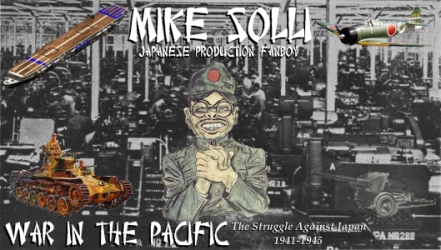rattovolante
Posts: 188
Joined: 8/30/2009
From: Italy
Status: offline

|
thanks for the warnings :) but don't worry, I know it's tough, I've been following the forums since when the game was rumored to be near completion (like... er... last year!  ) )
Also, I'm not actually playing right now, more learning the basics and doing crazy experiments just to figure out how things work. I think this isn't a game where you can learn while you play - my plan is to start playing the AI (i.e., playing with the goal of actually defeating it, not just learning) when I feel I have a decent grasp of the basics.
Also, I believe that the basics are better learnt from the Japanese side, as there is way more action (and thus more possible mistakes and learning opportunities) right from the very first turns, so if I feel like for example experimenting with amphibious operations I don't need to process 5 turns just to get to the point where I can see what the differences in losses/disruption/whatever are between a 0-preparation invasion, a 50-preparation one and a 100-preparation one for example.
First lesson already learnt: some of the buttons have no undo short of reloading a previous save ;)
quote:
Section 9.3.3.3 AUTOMATIC TRANSFER OF BULK CARGO BETWEEN ADJACENT PORTS has some info on how things get transferred from Hokkaido to Honshu.
This is interesting, I had understood that section of the manual in a different way. The manual reads:
quote:
"Whether this automatic transfer occurs depends on the need for the material to be transferred between the two ports.
[...]
The amount of material transported in this way is determined by the need for the material to be transferred from the source port to the adjacent destination port. For example, if a port has excess fuel present, and an adjacent port has Heavy Industry present but no fuel, then some of the excess fuel will be automatically transported from the port containing the fuel to the port with the Heavy Industry (as fuel is required to make Heavy Industry centers operate)."
As an example, let's suppose that Hakodate (Hokkaido) and Ominato (Honshu) are considered "adjacent" by the game - I'm not 100% sure about this as the hexside between them is unpassable (red).
I understood that since Ominato has no refineries, it won't ever have a need for oil.
Do you mean that Ominato, being connected by rail to the refineries in Honshu will be marked as "needing oil" by the game when any of Honshu bases needs oil?
quote:
If you need more, you need to arrange for transport by ship. Since Asahikawa is landlocked, load up resources at some port. Once the stock there is depleted, automatic transfer within Hokkaido (by lorry or railroad) will move resources to the port, ready for embarkation onto the next ship going to Honshu.
So in practice a ship in port trying to load resources (or oil or whatever) will "pump out" resources from the whole (rail)road network the port is linked to? Am I understanding this correctly? I expected to have to send ships to the ports holding resources (and to enlarge the ports of resource-producing basese), rather than just selecting a single port or two per island/cluster and doing all the shipping through them.
Does it also mean that for example, to ship resources from China to Honshu (just as an example, regardless of whether it's a good idea to actually do it) I can use the port of Fusan instead of, say, Shanghai or Port Arthur? Is there any spoilage for automatically moving oil/resources over long distances (or for example, minor roads) in this way?
Unrelated question: are HI and manpower points (not facilities) actually represented on map? For example, if I want to expand the refineries at Miri, do I need to ship HI and manpower there in addition to supply or are HI and manpower points just detracted from an abstract pool (sort of like mines, for example)?
< Message edited by rattovolante -- 8/30/2009 10:38:44 AM >
|
 Printable Version
Printable Version










 )
) 

 New Messages
New Messages No New Messages
No New Messages Hot Topic w/ New Messages
Hot Topic w/ New Messages Hot Topic w/o New Messages
Hot Topic w/o New Messages Locked w/ New Messages
Locked w/ New Messages Locked w/o New Messages
Locked w/o New Messages Post New Thread
Post New Thread